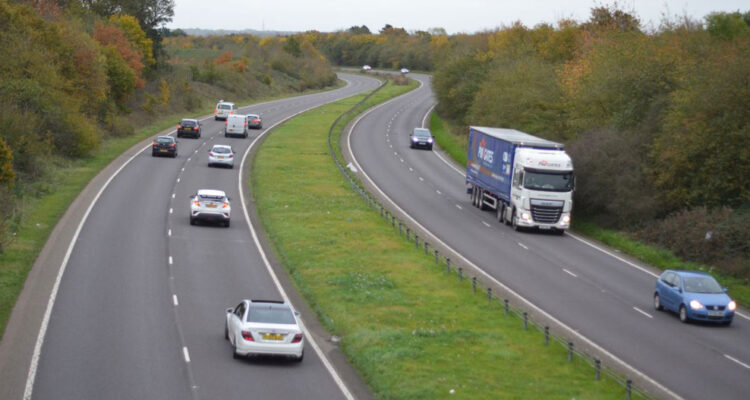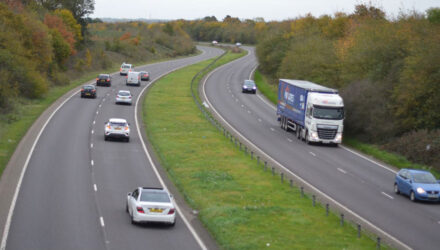The UK Government is poised to unveil a comprehensive road safety strategy this autumn, marking the first such initiative in over a decade. This long-awaited plan aims to address the alarming rise in road fatalities and serious injuries, which currently claim around 1,600 lives annually and cost the NHS more than £2 billion each year.
Central to the proposals are mandatory eye tests for drivers aged over 70, a reduction in the drink-driving limit for England and Wales to align with Scotland’s stricter standards, and new penalties for passengers not wearing seatbelts. These measures reflect a growing consensus that existing self-reporting systems and safety messaging are insufficient to curb the dangers on Britain’s roads.
At the heart of the strategy is the introduction of compulsory eyesight tests for motorists over the age of 70. Currently, drivers in this age group must renew their driving licence every three years and self-declare any visual impairments, excluding common issues like short-sightedness or colour blindness.
However, the UK stands as one of only three European countries relying solely on self-reporting for such conditions, a system criticised as the “laxest in Europe” by a recent coroner’s report following inquests into deaths caused by drivers with failing eyesight. Under the new plans, failing these tests could result in a driving ban, with additional considerations for medical assessments related to conditions such as dementia. This shift comes amid statistics showing a 47% increase since 2010 in collisions involving drivers over 60 where someone is killed or seriously injured.
The drink-driving limit is also set for a significant overhaul. Ministers are expected to lower the threshold in England and Wales from 35 micrograms of alcohol per 100 millilitres of breath to 22 micrograms, matching the level implemented in Scotland in December 2014. This change is intended to deter even minimal alcohol consumption before driving, though evidence from Scotland suggests mixed results: while road accidents did not decrease notably, public sentiment against drink-driving strengthened.
A government source emphasised the urgency, stating, “In no other circumstance would we accept 1,600 people dying [on the roads each year], with thousands more seriously injured, costing the NHS more than £2bn per year. This Labour government will deliver the first road safety strategy in a decade, imposing tougher penalties on those breaking the law, protecting road users and restoring order to our roads.”
Further proposals include allowing police to use roadside saliva tests as primary evidence for drug-driving prosecutions, replacing the need for blood tests, which could streamline enforcement amid a 78% rise in drivers killed with drugs in their system over the past decade.
Penalty points for passengers failing to wear seatbelts are another key element, addressing the fact that 25% of road fatalities in 2023 involved individuals not belted up, up from 21% in 2014.
Tougher sanctions for uninsured drivers and measures against “ghost plates” that evade automatic number-plate recognition cameras are also under consideration.
Justice Minister Alex Davies-Jones described the reforms as “the biggest shake-up to our driving laws for decades,” but noted they remain part of a consultation process, adding that the government is not currently pursuing graduated licences for young drivers to avoid “unfairly discriminating” against them.
The strategy has elicited a range of reactions from stakeholders. Road safety organisations have largely welcomed the moves.
Bill Smith, Director of Communications at Road Safety GB, said, “The new road safety strategy is much anticipated by the profession and as such it’s great to have confirmation that it will definitely be published before the end of this year. Road Safety GB welcomes all of the proposed measures outlined in this article, in particular lowering the drink drive limit, and tightening up the rules around eyesight testing for older drivers.”
Similarly, Ruth Purdie OBE, Chief Executive of The Road Safety Trust and UKROEd, stated, “Too many lives are still lost on UK roads every year. We welcome the early signs that the new road safety strategy will address key issues such as driver eyesight and drink-driving limits.” The British Medical Association (BMA) echoed this support, noting that drink-driving strains the NHS and that better enforcement and public education on alcohol harms are essential for impact.
However, concerns have been raised about practical implications.
Edmund King, President of the AA, defended older drivers as “relatively safe” but acknowledged that compulsory eye tests are “a small price to pay” for safety, while highlighting higher risks among young drivers, with one in five crashing in their first year. Some drivers, like 73-year-old Peter Browne from Great Yarmouth, who suffers from glaucoma, expressed frustration over NHS appointment delays, questioning, “If it was found that my eyesight was not of sufficient level to drive, would it be my fault or the NHS for not being able to give me an appointment?” The hospitality sector fears the lower drink-driving limit could harm rural pubs, potentially leading to closures if patrons avoid even one drink.
Even Conservative leader Kemi Badenoch has backed the eye test proposals, saying, “I think we need to make sure that people driving on our roads and using our streets are safe.”
Steve Gooding, Director of the RAC Foundation, urged a focus on priorities like young drivers and mandatory safe-driving features in new cars, while emphasising professional eye testing for all. Despite debates, the strategy underscores a commitment to reducing road casualties, which have risen nearly 20% since 2010 after a decade of decline.
As the consultation unfolds, the Government faces the challenge of balancing safety enhancements with fairness and practicality. These reforms could significantly improve safety, but their success will depend on robust enforcement and public buy-in.
Mark Salisbury, Editor.






